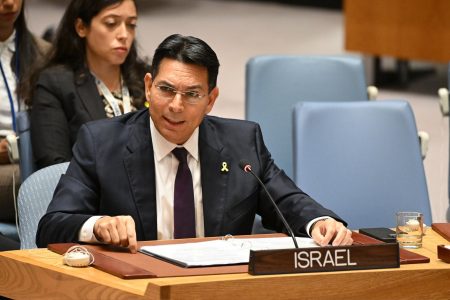The abrupt collapse of Bashar al-Assad’s regime in Syria, after more than a decade of brutal civil war, marks a seismic shift in the Middle Eastern political landscape. Assad, an ophthalmologist by training, inherited the presidency from his father in 2000 and clung to power through a ruthless campaign of violence against his own people, including the documented use of chemical weapons. The recent resurgence of rebel forces, spearheaded by a coalition of predominantly Islamist groups, including the US-designated terrorist organization Hayat Tahrir al-Sham (HTS), proved too powerful for Assad’s weakened forces to withstand. This swift and unexpected turn of events has sent shockwaves through the region, leaving a power vacuum with potentially far-reaching consequences.
The fall of the Assad dynasty, which ruled Syria for over five decades, stems from the initial uprising in 2011. Sparked by the Arab Spring pro-democracy movements sweeping across the region, protests against Assad’s authoritarian rule were met with brutal repression. This violent crackdown ignited a civil war that claimed the lives of over half a million Syrians and displaced millions more. Throughout the conflict, Assad received crucial support from Russia and Iran, as well as the Lebanese Hezbollah militia. Russian intervention in 2015, when Assad’s regime was on the brink of collapse, proved crucial in propping up his rule. However, Russia’s ongoing war in Ukraine, coupled with Israel’s recent strikes against Iranian military infrastructure, likely contributed to a weakening of support for the Assad regime.
HTS, an al-Qaeda affiliate led by Abu Mohammed al-Golani, played a pivotal role in the final offensive that ousted Assad. Al-Golani, who carries a $10 million US bounty on his head, has attempted to present a more moderate image in recent years, distancing himself from the extremist ideology that characterized his earlier years fighting against American troops in Iraq. However, experts warn that HTS’s ultimate goal remains the establishment of a totalitarian Islamist state resembling the Taliban regime in Afghanistan. Their ascendance raises serious concerns about the future of Syria and the potential for further regional instability.
The final chapter of Assad’s rule unfolded rapidly, with rebel forces swiftly capturing key cities like Aleppo, Hamas, and Homs. This swift advance caught both Russia and Iran off guard, exposing the vulnerabilities of Assad’s regime and the shifting dynamics of the region. Reports, denied by Jordan, suggested that Egyptian and Jordanian officials encouraged Assad to flee and form a government-in-exile. The UN Security Council Resolution 2254, passed in 2015, calling for a ceasefire, UN-supervised elections, and a new constitution, was consistently rejected by Assad, further entrenching the conflict.
The roots of the uprising can be traced back to a seemingly insignificant act of defiance in the city of Daraa in 2011. A group of schoolboys, inspired by the Arab Spring protests, spray-painted anti-regime slogans on a wall. The ensuing brutal crackdown on these children, involving torture and abuse, became a symbol of the regime’s oppressive tactics and ignited widespread outrage, fueling the flames of rebellion. Ironically, it was in Daraa that Assad’s regime finally met its demise, ousted by Islamist forces on Friday.
The future of Syria remains uncertain, fraught with complex challenges. The power vacuum left by Assad’s departure raises the specter of increased sectarian violence, further humanitarian crises, and the potential for the establishment of a hardline Islamist state. The international community faces a difficult task in navigating the aftermath of this protracted conflict and ensuring a stable and peaceful transition for the Syrian people. The implications of this regime change extend far beyond Syria’s borders, impacting regional stability and the global fight against terrorism. The rise of HTS as a dominant force presents a new and formidable challenge, demanding a reassessment of strategies and priorities in the region.










